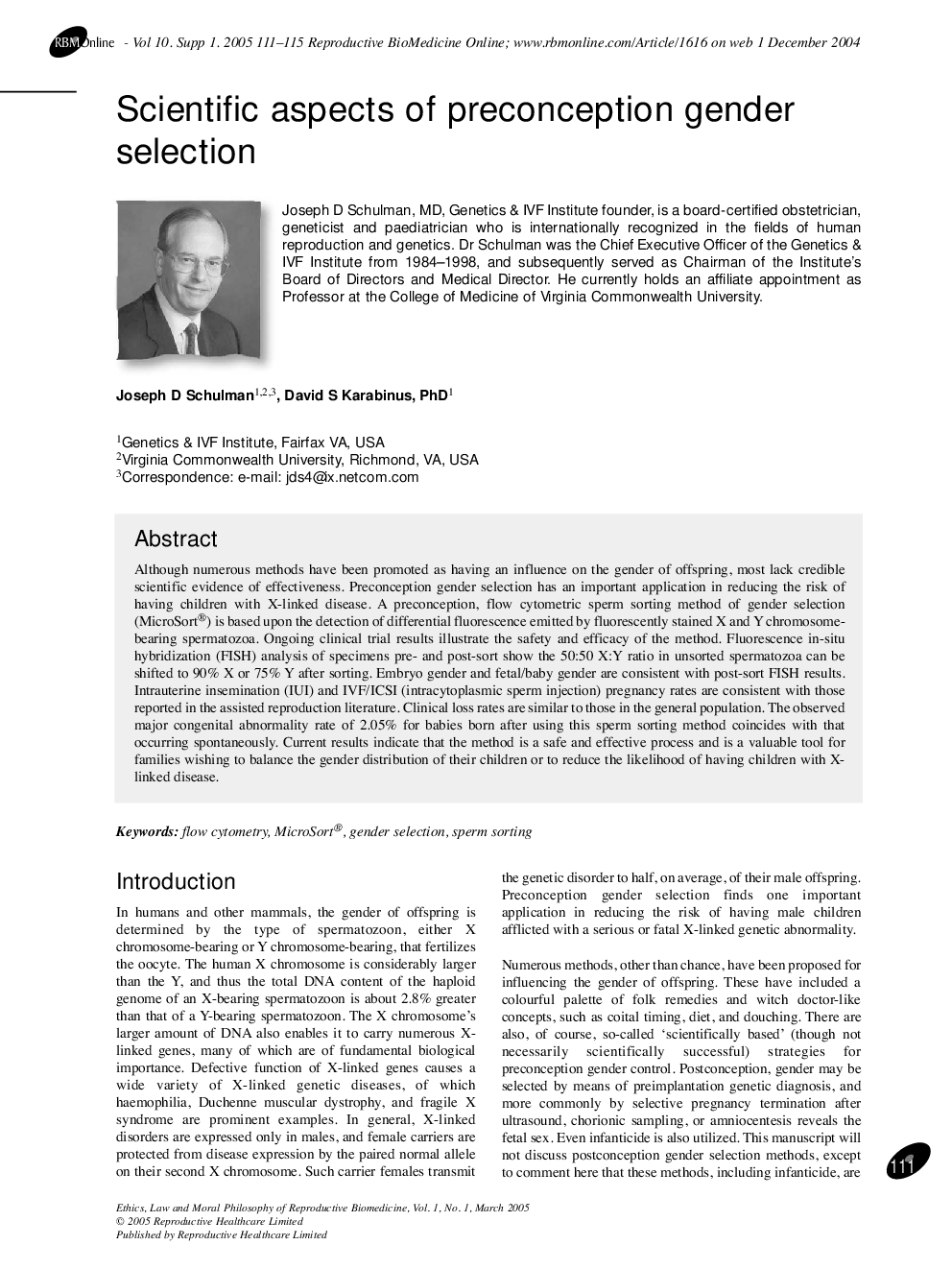| Article ID | Journal | Published Year | Pages | File Type |
|---|---|---|---|---|
| 9335251 | Reproductive BioMedicine Online | 2005 | 5 Pages |
Abstract
Although numerous methods have been promoted as having an influence on the gender of offspring, most lack credible scientific evidence of effectiveness. Preconception gender selection has an important application in reducing the risk of having children with X-linked disease. A preconception, flow cytometric sperm sorting method of gender selection (MicroSort®) is based upon the detection of differential fluorescence emitted by fluorescently stained X and Y chromosome-bearing spermatozoa. Ongoing clinical trial results illustrate the safety and efficacy of the method. Fluorescence in-situ hybridization (FISH) analysis of specimens pre- and post-sort show the 50:50 X:Y ratio in unsorted spermatozoa can be shifted to 90% X or 75% Y after sorting. Embryo gender and fetal/baby gender are consistent with post-sort FISH results. Intrauterine insemination (IUI) and IVF/ICSI (intracytoplasmic sperm injection) pregnancy rates are consistent with those reported in the assisted reproduction literature. Clinical loss rates are similar to those in the general population. The observed major congenital abnormality rate of 2.05% for babies born after using this sperm sorting method coincides with that occurring spontaneously. Current results indicate that the method is a safe and effective process and is a valuable tool for families wishing to balance the gender distribution of their children or to reduce the likelihood of having children with X-linked disease.
Related Topics
Health Sciences
Medicine and Dentistry
Obstetrics, Gynecology and Women's Health
Authors
Joseph D Schulman, David S PhD,
